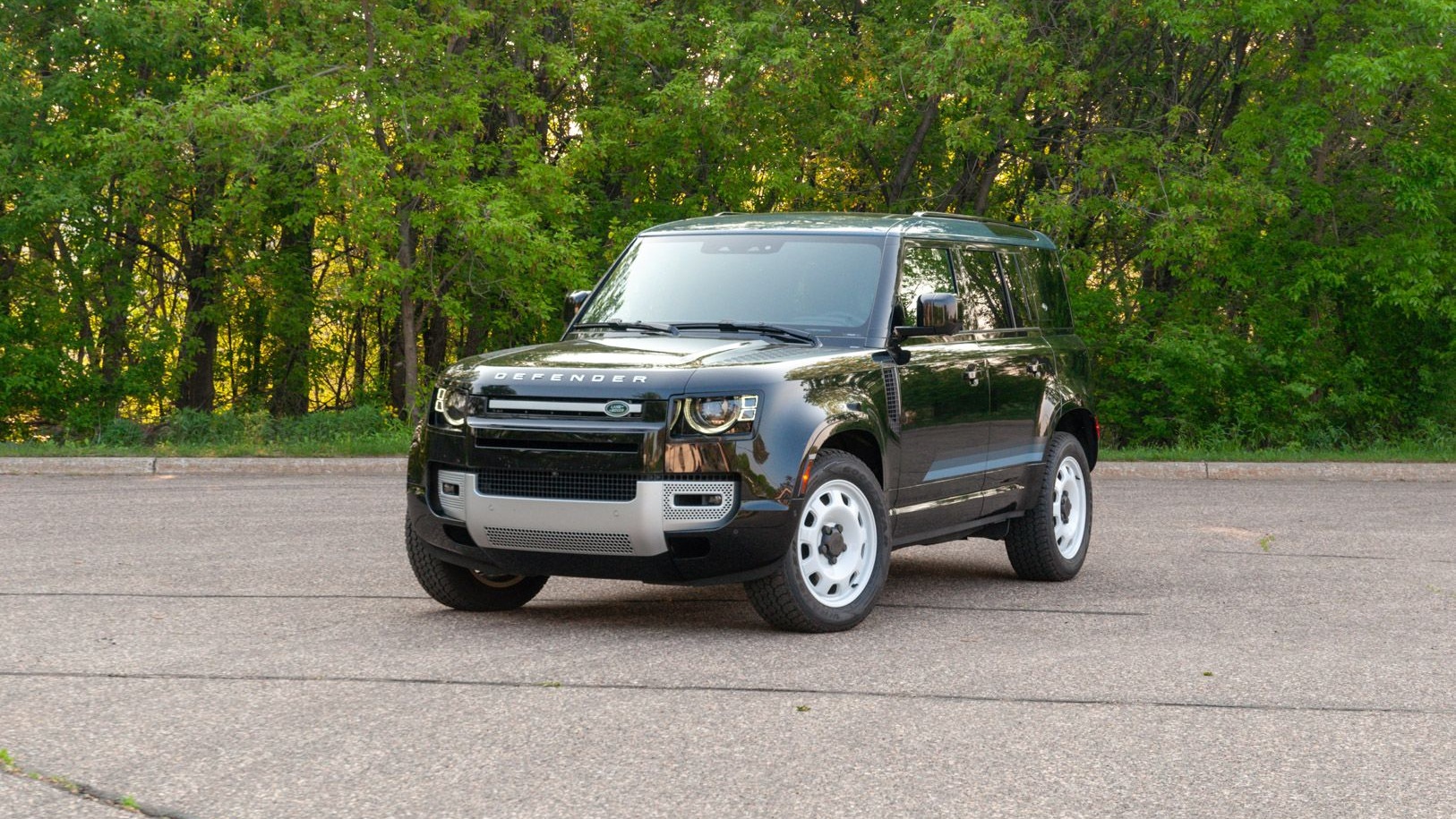
Rivals from all around have the Land Rover Defender in their sights. Yet, the Brit still manages to stand alone.
I spent a week living family life with the 2024 Land Rover Defender 110. What did I learn? Dismissing this icon for the competition would be a mistake.
Why? I found the Defender to be screwed together well, and I liked it strong turbo-6 powertrain option, and its packaging and controls. But living with those controls can be confusing, the turbo-6 has lag, and it's a Land Rover, which means electronic gremlins are more likely than in some rivals, according to some studies.
Here are the pros and cons that I experienced while living with the 2024 Land Rover Defender 110.

Pro: Land Rover build quality cuts above the competition
This thing is screwed together so well, it took me down nostalgia lane to Mercedes-Benzes of the ‘90s. Outside of a Mercedes-Benz G-Class, I struggle to think of another modern vehicle that feels this solid, though our editorial director argues the Polestar 3 is at this level. From the way the door handles actuate and don’t wiggle to the doors themselves shutting with a solid thunk. Nothing feels like it came out of a box labeled Fragile. The buttons all click with a tactile quality that can be both felt and heard. There’s a grab handle on the side of the dashboard to ease the process of getting in and out. You can shake the entire SUV with that thing and the handle itself doesn’t budge.
Try that with the same handle in the Ford Bronco and you might rip the plastic right off the center console. No $90,000 Jeep Wrangler or Ford Bronco sounds or feels like this. And a G-Class costs well over $80,000 more.
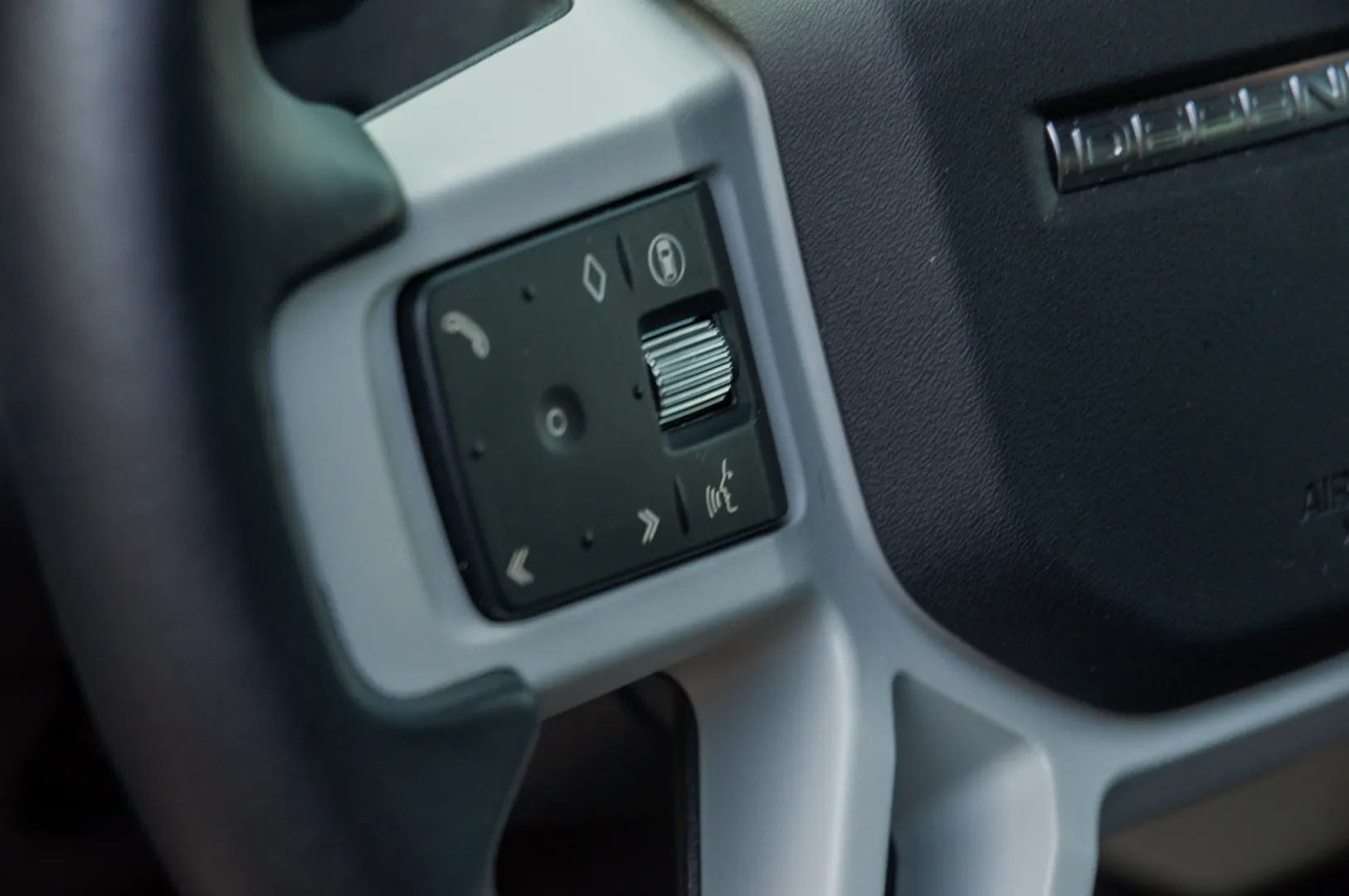
2024 Defender 110 comes with electronic gremlins standard
Con: The electronic gremlins come out during the day…and at night
During my week with the Defender 110 the voice command button on the steering wheel didn’t respond most of the time. It controls both the infotainment system’s voice commands along with Siri for iOS devices. When it worked, it worked, but not often. About half of the week the touch to unlock buttons on the door handles didn’t respond. I’d have to take the key from my pocket to unlock the Defender with the remote, but then sometimes the touch to unlock buttons would randomly work fine. This Defender was essentially new with just over 7,000 miles on it. This all is common to the Land Rover life, as demonstrated by J.D. Power’s vehicle dependabilty survey.
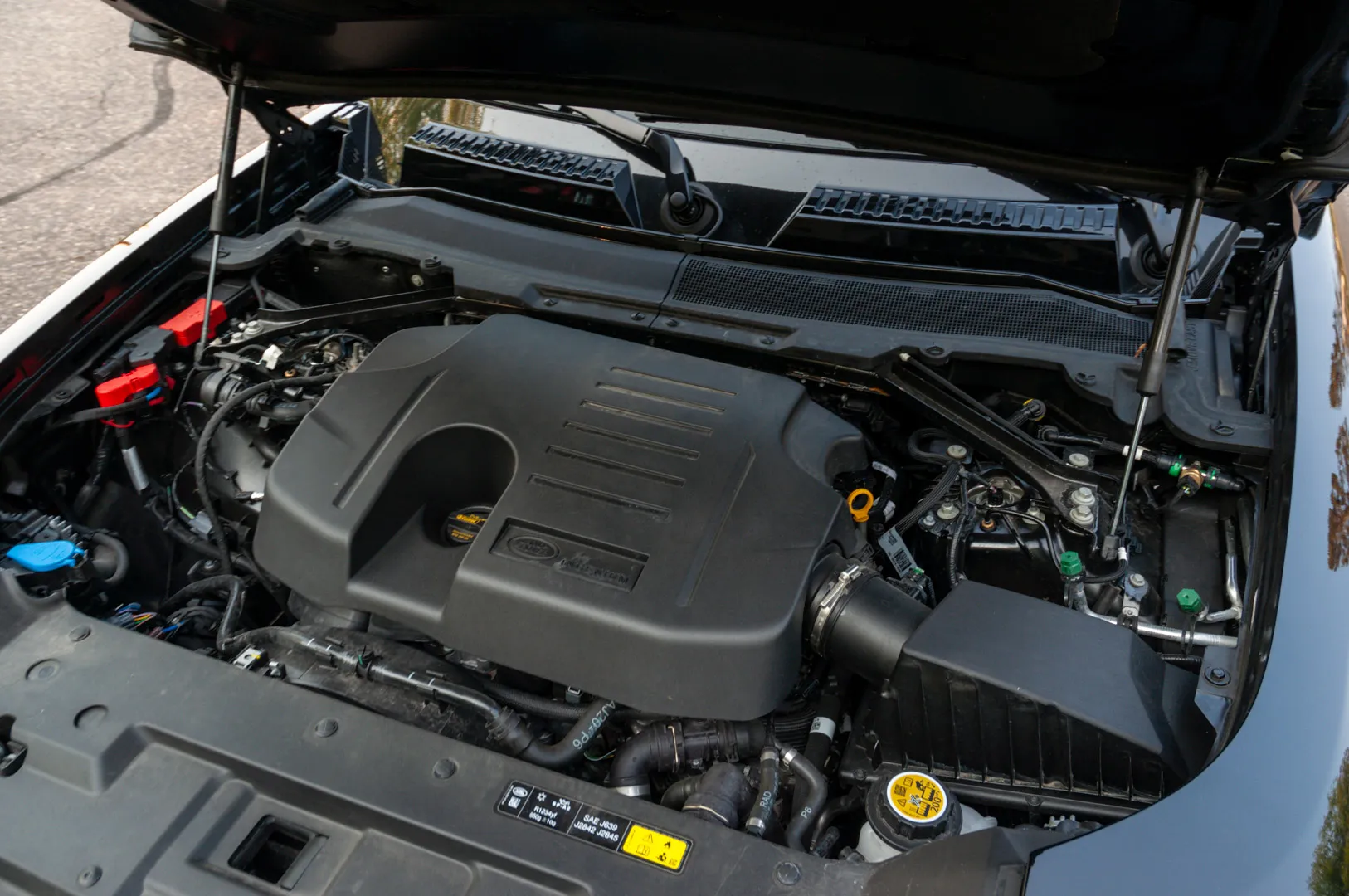
2024 Defender 110's turbo-6 is strong and feels underrated
Pro: Defender’s turbo-6 hits the sweet spot
The Defender can be had with a 296-hp 2.0-liter turbo-4 that my colleagues have deemed pokey. I’ve driven a Defender with the available supercharged 5.0-liter V-8 cranking out 518 hp, and it pulls like a hungry dog on a leash. The truth of the matter is the 3.0-liter turbo-6 rated at 395 hp in my tester is the sweet spot. Power is nothing short of robust, and underrated. It’s quick, the turbo-6 sounds great, both at idle and under acceleration, and it never gets nasal like the turbo-6 in the Lexus GX.
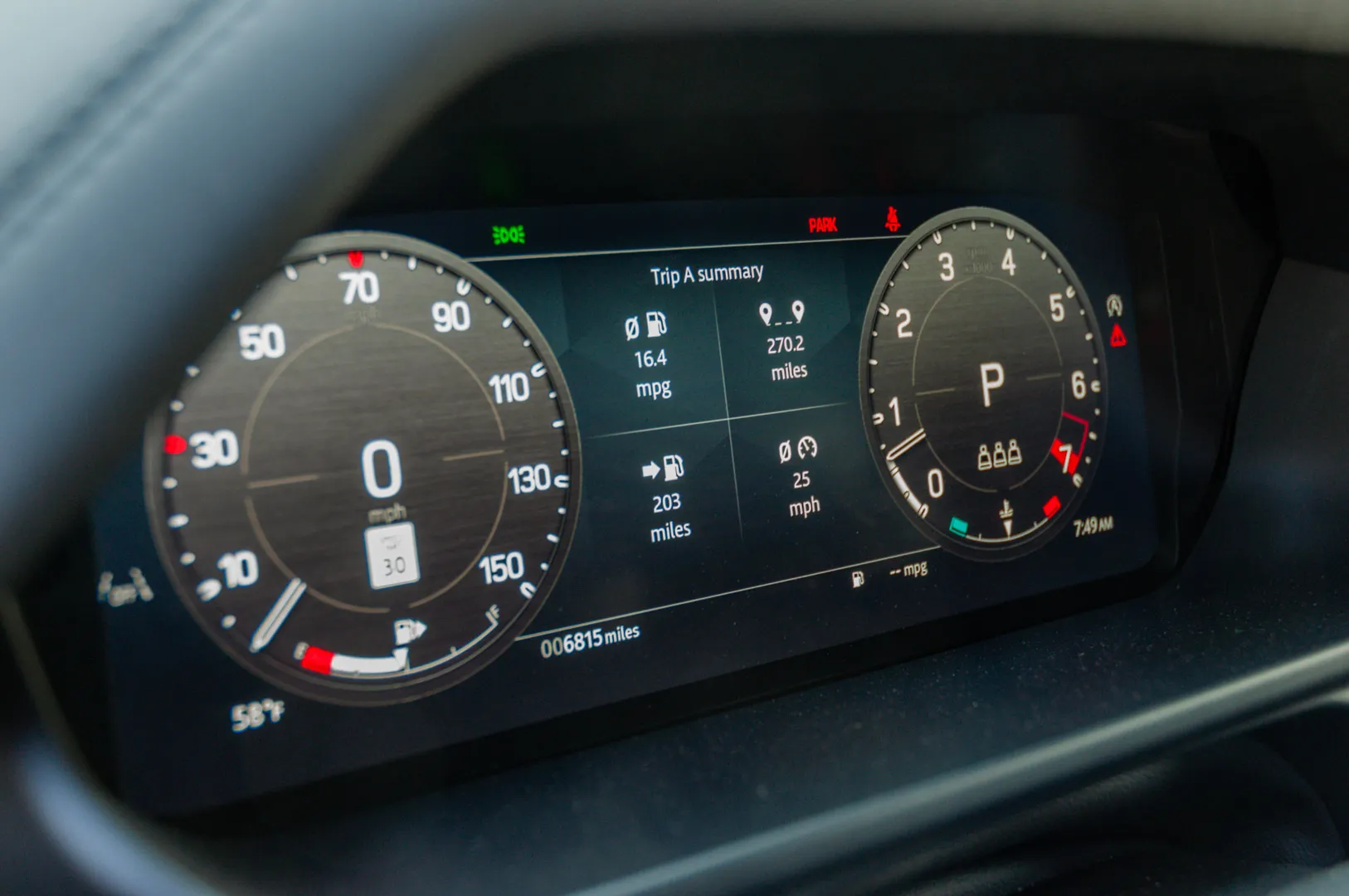
Con: Defender’s turbo-6 lags and drinks
With EPA fuel economy ratings of 17 mpg city, 20 highway, 18 combined, the turbo-6 isn’t particularly efficient. Over the course of about 270 miles of mixed suburban driving the Defender averaged 16.4 mpg. That’s not great, but the 6-cylinder drank less than the V-8.
A battery electric powertrain in this thing would be killer, Land Rover. I say that because the turbo-6 has noticeable turbo lag and then power shoots in its veins like adrenaline at about 2,200 rpm. The turbo-6 in a BMW or Mercedes-Benz is smoother than this. Even the new Hurricane turbo-6 from Stellantis in a Jeep Wagoneer has smoother power delivery.
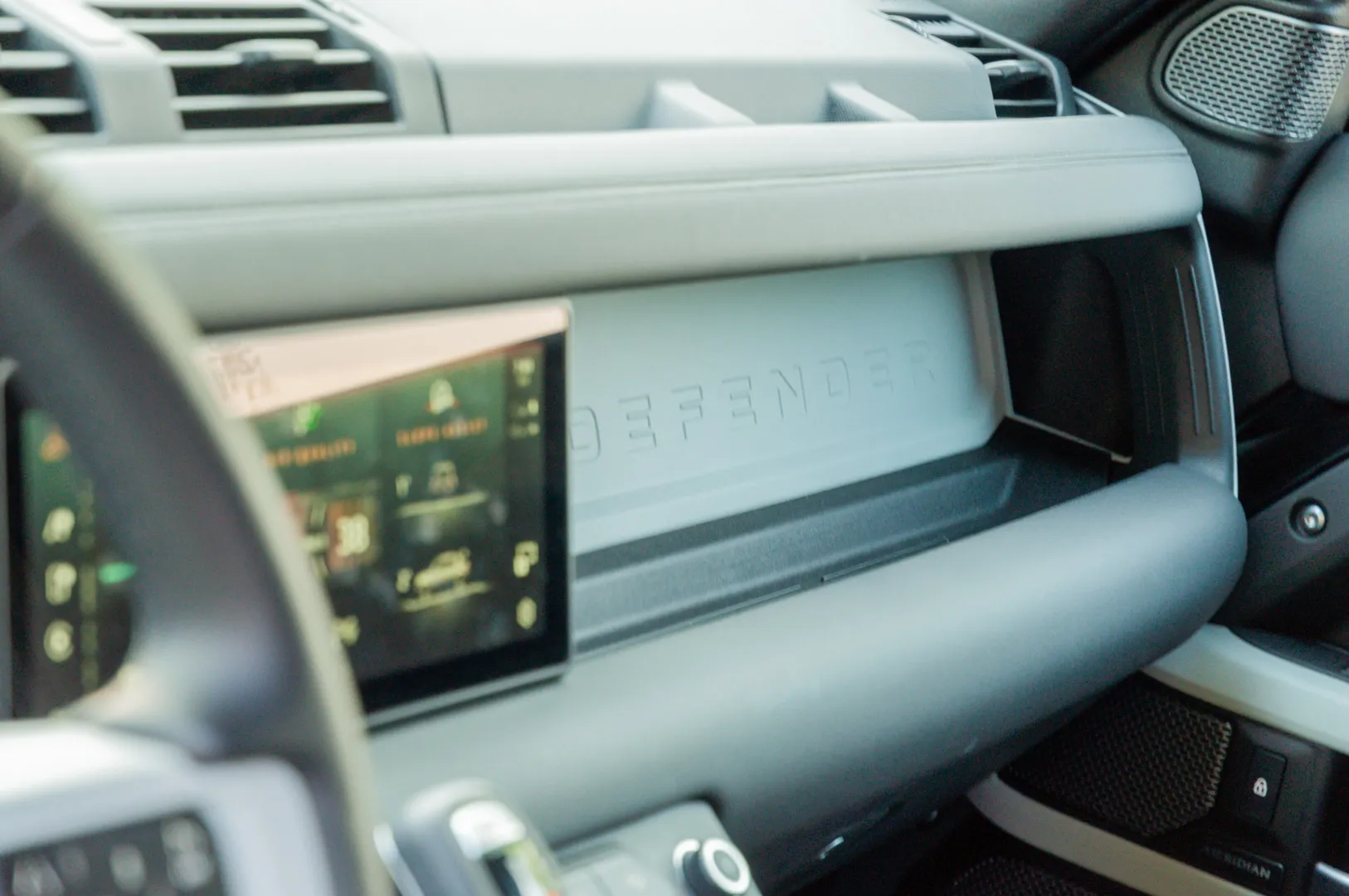
The Defender features a shelf and USB plug on the dashboard to hold items while on the move
Pro: Defender packages real controls with functional design
Slide behind the wheel of the Defender and you’ll be thrilled to find buttons and knobs for essential climate and audio functions. Forward vision is terrific thanks to an upright greenhouse with tall glass and thin A-pillars. The spare tire mounted on the tailgate hampers rear vision, but my tester had a $570 digital rearview mirror that streams a camera feed to solve this issue. The right side of the dashboard features a recessed shelf that could hold anything from a compass and handheld GPS to radio gear or a smartphone. Rear-seat occupants, which in this case were my kids and their friends, loved the high seating position and the roof-mounted alpine windows that let light in from the sky.
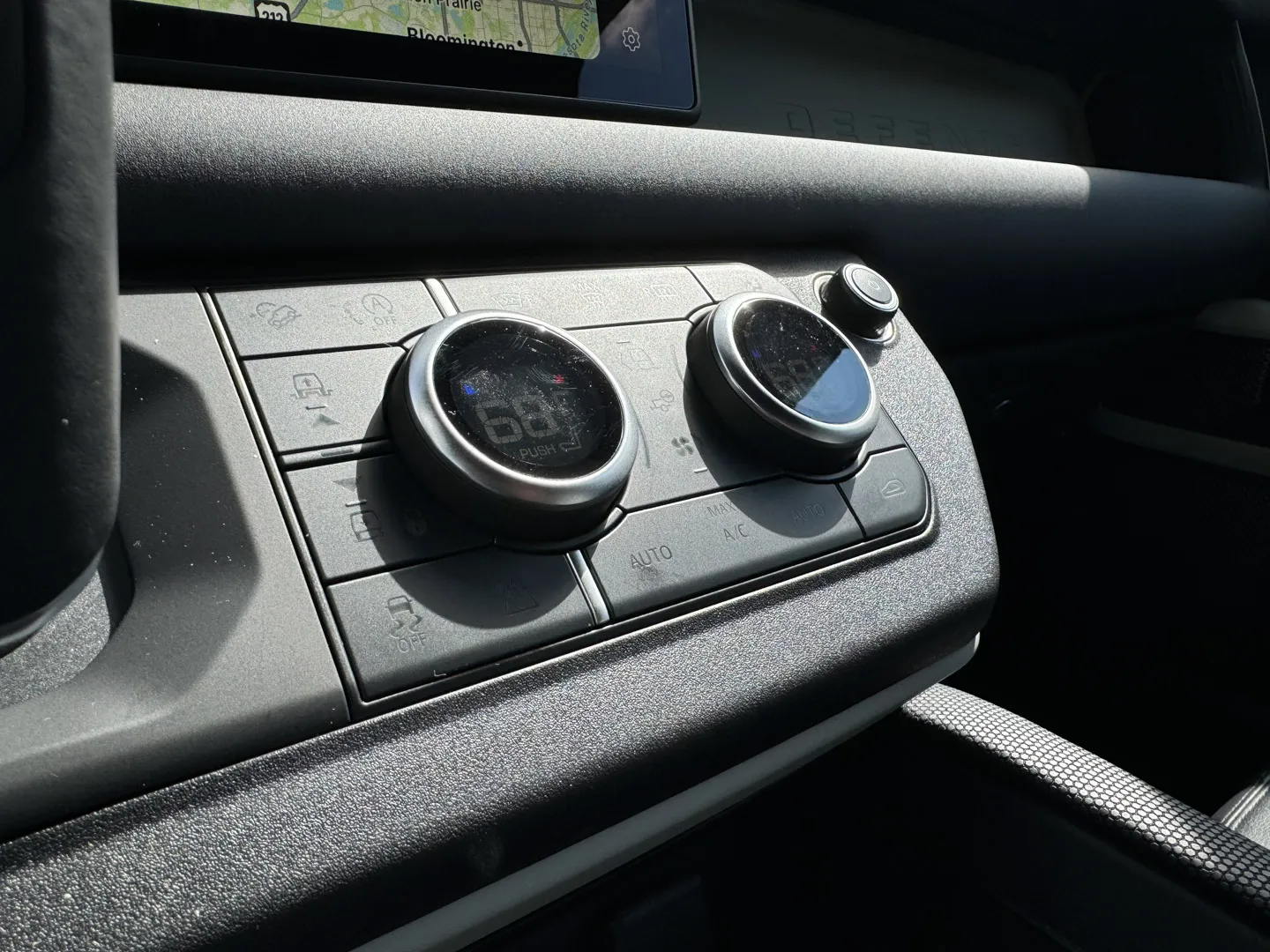
Con: Defender’s controls are confusing and poorly backlit
At best all those hard controls are confusing to use in practice. The temperature control dials serve multiple functions ranging from heated and cooled seat control (my tester didn’t have the latter) to the off-road drive modes. It’s all layered and controlled by buttons, which then dictate what the knobs do. Push this to use it for that or click this to have it control that. Executing changes is cumbersome and requires thinking. Worse, the sun washes out these controls so the functions each button serves can’t really be seen in certain lighting conditions.
In the land of $80,000 to $90,000 Ford Broncos and Jeep Wranglers, the Defender doesn’t seem unreasonable at $62,275 including a $1,475 destination charge in 110 four-door configuration. At $82,053 as tested thanks to options ranging from the turbo-6 and off-road driving modes for $750 to $1,600 for air suspension and adaptive dampers, Defender prices seem almost fair.
After my first stint with the 2024 Lexus GX I said the automaker painted a target on Land Rover. I stand behind that. But after some virtues and hassles revealed themselves with more time behind the wheel of the GX, sliding behind the wheel of a $90,000-plus Jeep Wrangler and Ford Bronco, and then living with the Defender, it’s clear the Defender still holds its own in the segment.
source: https://www.motorauthority.com/news/1143541_2024-defender-110-test-drive-review
by Joel Feder
http://www.boscheuropean.com
No comments:
Post a Comment